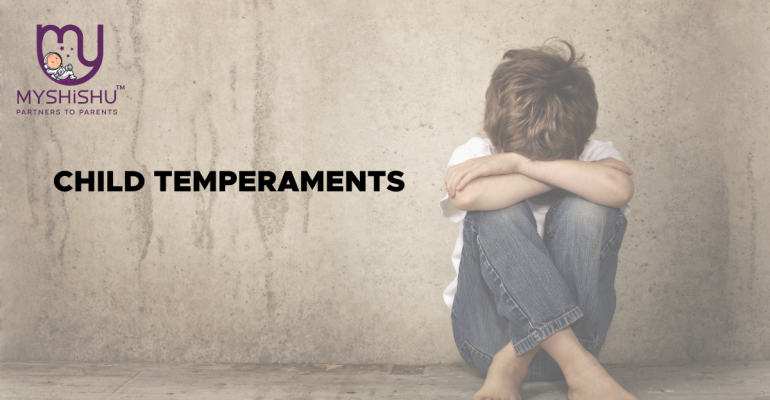Understanding Child Temperaments: Nurturing Individuality
Understanding Child Temperaments: Nurturing Individuality
Explore the intricate world of “Child Temperaments” in this comprehensive blog post, delving into the nuanced characteristics that shape a child’s disposition. From identifying temperamental traits and understanding their genetic and environmental influences to tailoring effective parenting strategies, this exploration navigates the dynamic journey of nurturing individuality. Dispel common myths, learn to support siblings with diverse temperaments, and understand the educational implications. As we unravel the complexities, discover how acknowledging and celebrating these temperamental differences empowers parents to foster resilience, harmony, and a thriving family life.
Introduction
Childhood, a period marked by rapid growth and development, is a mosaic of individual temperaments. Recognizing and understanding child temperaments is essential for fostering a positive and harmonious parent-child relationship. In this comprehensive exploration, we delve into the intricacies of child temperaments, shedding light on their impact on behavior, interactions, and overall development.
Child Temperaments Defined
Child temperaments encompass the innate characteristics that influence a child’s reactions to the world around them. These traits, present from birth, shape how children respond to stimuli, process information, and engage with their environment. Understanding and appreciating these temperamental differences contributes to effective parenting strategies tailored to each child’s unique needs.
The Spectrum of Child Temperaments
Childhood temperaments are often categorized into various types, with researchers identifying common traits that help define a child’s disposition. While these categories provide a framework, it’s crucial to remember that temperaments exist on a spectrum, and each child’s personality is a blend of these traits.
- The Easy-Going Temperament:
- Children with an easy-going temperament are generally adaptable, approach new situations with ease, and exhibit regular sleep and eating patterns.
- They are often described as “happy” or “content” and tend to recover quickly from disruptions.
- The Active or Feisty Temperament:
- Children with an active or feisty temperament are characterized by high energy levels, intensity in reactions, and a spirited approach to life.
- They may be more prone to frequent mood swings and may require outlets for their abundant energy.
- The Shy or Slow-to-Warm-Up Temperament:
- Shy or slow-to-warm-up children tend to be more reserved and cautious and take time to acclimate to new people or situations.
- They may require additional support in navigating social interactions and new environments.
- The Sensitive Temperament:
- Sensitive children are highly attuned to their surroundings and may react strongly to sensory stimuli, such as sounds, lights, or textures.
- They often benefit from gentle and supportive approaches, avoiding overwhelming environments.
Understanding Your Child’s Temperament: Discovering and understanding your child’s temperament is a dynamic process that involves careful observation and active engagement. As parents, educators, or caregivers, it’s essential to acknowledge and respect these temperamental differences, recognizing that they contribute to the rich tapestry of each child’s personality.
Identifying Your Child’s Temperament
- Observation:
- Observe your child’s reactions to various situations, paying attention to their responses to new people, environments, and challenges.
- Note their energy levels, adaptability, and general mood in different settings.
- Interactions:
- Engage in positive interactions with your child, allowing you to understand their preferred play styles, communication methods, and social preferences.
- Observe how they handle frustration, excitement, or disappointment.
- Consistency:
- Temperamental traits often persist over time, providing a consistent framework for understanding your child’s natural tendencies.
- Consistent patterns in sleep, eating, and responses to stimuli offer valuable insights.
- Communication:
- As children develop language skills, they should engage in open and age-appropriate conversations about their feelings, preferences, and experiences.
- Encourage them to express themselves, fostering a healthy dialogue that builds trust.

The Impact of Child Temperaments on Parenting
Understanding your child’s temperament significantly influences your parenting approach. Tailoring your strategies to align with your child’s natural tendencies enhances effective communication, reduces potential conflicts, and nurtures a supportive environment.
- Adaptability:
- For an easy-going child, a flexible and adaptable parenting style may be suitable, allowing them to explore and learn at their own pace.
- An active or feisty child may benefit from structured routines and outlets for physical activity.
- Support and encouragement:
- Shy or slow-to-warm-up children thrive with gentle encouragement and support in social situations.
- Sensitive children may require a calm and reassuring approach, minimizing overwhelming sensory stimuli.
- Communication Styles:
- Tailor your communication style to match your child’s temperament. Some children may respond well to direct communication, while others may benefit from a more nuanced and empathetic approach.
- Conflict Resolution:
- Recognize that different temperaments may lead to diverse conflict resolution styles. Help your child navigate conflicts by teaching them constructive communication and problem-solving skills.
The Role of Genetics and the Environment
Child temperaments are shaped by a combination of genetic factors and environmental influences. While genetics contribute to the predisposition of certain traits, the surrounding environment plays a crucial role in either enhancing or tempering these characteristics.
- Genetic Factors:
- Certain temperamental traits may have a hereditary component, passed down from parents or other family members.
- A family history of certain temperamental traits can provide insights into a child’s predisposition.
- Environmental Influences:
- The child’s environment, including parenting styles, cultural influences, and early experiences, can shape the expression of temperamental traits.
- Positive and supportive environments can help children navigate and manage their temperamental tendencies effectively.
Parenting Strategies for Different Temperaments
Understanding your child’s temperament allows you to tailor your parenting strategies to provide optimal support and encouragement. Here are specific strategies for different temperaments:
- For easy-going children:
- Foster independence by allowing them to explore their environment.
- Provide positive reinforcement for good behavior to maintain their natural positivity.
- For active or feisty children:
- Channel their energy through structured activities and sports.
- Establish clear expectations and boundaries while encouraging their enthusiasm.
- For shy or slow-to-warm-up children:
- Gradually expose them to new people and environments to build confidence.
- Allow them time to observe before actively participating in social activities.
- For sensitive children:
- Create a calm and soothing environment, especially during transitions.
- Acknowledge and validate their feelings, helping them express emotions effectively.
Parenting as a Dynamic Journey
Parenting is an ever-evolving journey marked by continuous learning and adaptation. Embracing the dynamic nature of child temperaments allows parents to cultivate flexibility, patience, and a deep understanding of their child’s unique qualities.
- Flexibility:
- Recognize that temperaments may evolve as children grow and develop.
- Be flexible in adapting your parenting strategies to align with your child’s changing needs.
- Patience:
- Nurturing a child’s temperament requires patience and understanding.
- Recognize that challenges may arise, and learning to navigate them together fosters resilience.
- Continuous Learning:
- Stay informed about child development and temperamental research.
- Seek guidance from professionals, educators, and other parents to enhance your parenting toolkit.
Supporting Siblings with Different Temperaments
Parenting becomes even more intricate when raising siblings with diverse temperaments. Navigating the unique qualities of each child requires a balanced and individualized approach.
- Acknowledgment of Differences:
- Recognize and celebrate the individual temperamental differences between siblings.
- Avoid comparing siblings and appreciate each child’s unique strengths.
- Tailored Parenting:
- Tailor your parenting strategies to meet the specific needs of each child.
- Encourage open communication between siblings to foster understanding and empathy.
- Shared Activities:
- Find activities that cater to the interests and temperaments of both siblings.
- Create a harmonious environment where each child feels valued and supported.
Educational Implications of Child Temperaments
Child temperaments extend their influence to educational settings, impacting a child’s approach to learning, social interactions, and overall academic performance.
- Learning Styles:
- Recognize and accommodate different learning styles based on a child’s temperament.
- Provide a variety of learning opportunities that cater to diverse preferences.
- Social Interactions:
- Support shy or slow-to-warm-up children in developing social skills gradually.
- Encourage active or feisty children to channel their energy positively in group activities.
- Teacher Collaboration:
- Collaborate with teachers to share insights about a child’s temperament.
- Establish a partnership that fosters the child’s academic success and well-being.
Myths and Realities about Child Temperaments
Dispelling common myths surrounding child temperaments is essential for fostering a more accurate understanding of these innate characteristics.
- Myth: Temperaments Are Permanent:
- Reality: While temperaments provide a foundational framework, they can evolve with a child’s growth and experiences.
- Myth: All siblings should have similar temperaments.
- Reality: Siblings may have different temperaments, and acknowledging and appreciating these differences contributes to a harmonious family dynamic.
- Myth: Temperaments Determine Future Success:
- Reality: While temperaments influence a child’s approach to various aspects of life, success is multifaceted and shaped by various factors, including education, environment, and personal choices.
Additional Common Questions
-
What are the three types of children’s temperament?
Temperament is an important feature of social and emotional health. The word “temperament” refers to the way we approach and react to the world. It is our own personal “style” and is present from birth. There are three general types of temperaments: easy-going, slow-to-warm, and active.
-
What are the 4 types of temperament?
The four temperaments described individuals as sanguine (optimistic, social, and associated with the element of air), melancholic (analytical, quiet, earth), choleric (short-tempered, irritable, fire), and phlegmatic (relaxed, peaceful, water) (Buckingham, 2002).
-
What is childhood temperament?
Temperament is the way children respond to the world. Temperament influences the way children handle emotions, regulate behavior, feel around new people, and adapt to new situations. You can nurture children’s development using parenting strategies that suit their temperaments.
-
What is a difficult child temperament?
Difficult temperament describes children who are characterized by negative mood, withdrawal, low adaptability, high intensity, and low regularity (Thomas, Chess, Birch, Hertzig & Korn, 1963).
-
What are the 3 types of temperament?
Classic research on temperament found that most children fall into one of three categories: Easy/flexible, difficult/challenging, and slow-to-warm-up/cautious.
Conclusion
Understanding child temperaments is a transformative journey that enhances the parenting experience. It involves active observation, adaptation, and a commitment to nurturing each child’s unique qualities. By recognizing the impact of genetics and environment, tailoring parenting strategies, and appreciating the dynamic nature of temperaments, parents can create a supportive and enriching environment for their children. Embracing the diversity of temperaments within a family, fostering sibling relationships, and collaborating with educators contribute to a holistic approach to child development. As parents embark on this dynamic journey, they empower themselves with the knowledge to celebrate and nurture the individuality of each child, fostering a foundation for a harmonious and thriving family life.











